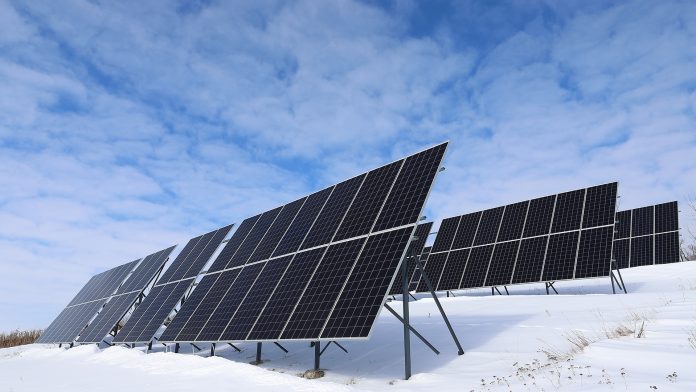University of Ottawa researchers have devised a smart approach using ground reflectors to optimise the effectiveness of solar energy.
The method incorporates artificial ground reflectors, a simple yet powerful enhancement.
Integrating these reflectors into solar setups has the potential to improve solar energy production and efficiency, making projects more economically viable.
The team found that placing reflective surfaces under solar panels can increase their energy output by up to 4.5%.
“We found that highly reflective white surfaces can boost solar power output,” explained Mandy Lewis, the paper’s lead author.
“Critically, these reflectors should be placed directly under the solar panels, not between rows, to maximise this benefit.”
The paper, published in Progress in Photovoltaics, is vital in assessing the cost and benefits of using artificial reflectors in solar energy projects.
Maximising solar energy production in Canada
The findings offer particular significance to Canada, where snow cover persists for three to four months of the year in major cities such as Ottawa and Toronto.
Canada’s vast landmass also experiences 65% snow cover for over half the year.
Because of this, bifacial solar systems with high ground reflectivity have great potential in these regions.
The findings will have a global impact
As 4% of the world’s land areas are classified as sandy deserts, the finding has global applications.
“This research is crucial for maximising solar energy production in geographically diverse locations,” according to Lewis.
“Furthermore, by generating more power per unit of land area, reflectors are ideal for densely populated areas, like city centres, where space limitations exist for solar installations.”
The findings hold value for countries that are typically cloudy, with power gains of 6% observed in cloudy Seattle compared to 2.6% in Tucson.
The research will contribute to the global energy transition.
The project was funded by the National Sciences and Engineering Research Council of Canada (NSERC), Ontario Graduate Scholarships (OGS), and the US Department of Energy (DOE).
The study marks the beginning of a new research collaboration between the University of Ottawa and NREL.









